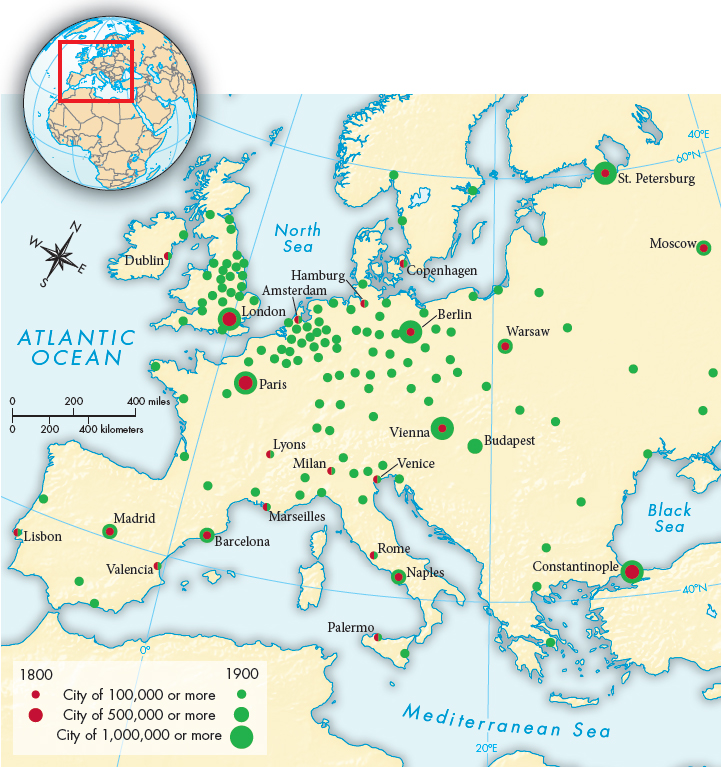Industry and the Growth of Cities
The main causes of the poor quality of urban life — deadly overcrowding, pervasive poverty, and lack of medical knowledge — had existed for centuries. Packed together almost as tightly as possible, people in cities suffered and died from the spread of infectious disease in far greater numbers than their rural counterparts. In the larger towns, more people died each year than were born, on average, and urban populations maintained their numbers only because newcomers continually arrived from rural areas.
The Industrial Revolution exacerbated these deplorable conditions. The steam engine freed industrialists from dependence on the energy of fast-
Great Britain, the first country in the world to go through the early stages of the Industrial Revolution (see Chapter 20), was forced to face the acute challenges of a changing urban environment early on (Map 22.1). Except on the outskirts, early-

There were more large cities in Great Britain in 1900 than in all of Europe in 1800.> MAPPING THE PASTANALYZING THE MAP: Compare the spatial distribution of cities in 1800 with the distribution in 1900. Where in 1900 are large cities concentrated in clusters?
CONNECTIONS: In 1800, what common characteristics were shared by many large European cities? (For example, how many big cities were capitals or leading ports?) Were any common characteristics shared by the large cities in 1900? What does this suggest about the reasons behind this dramatic growth?
|
These highly concentrated urban populations lived in extremely unsanitary and unhealthy conditions. Open drains and sewers flowed alongside or down the middle of unpaved streets. Toilet facilities were extremely primitive and inadequate. In parts of Manchester, as many as two hundred people shared a single outhouse. Such privies filled up rapidly, and since they were infrequently emptied, sewage often overflowed and seeped into cellar dwellings. By the 1840s there was among the better-
The environmental costs of rapid urbanization and industrialization were enormous as well. Black soot from coal-
Who or what bore responsibility for these awful conditions? The crucial factors included the tremendous pressure of more people and the total absence of public transportation. People simply had to jam themselves together to get to shops and factories on foot. In addition, government in Great Britain, both local and national, only slowly established sanitary facilities and adequate building codes.
Most responsible of all was the sad legacy of rural housing conditions in preindustrial society combined with appalling ignorance of germs and basic hygiene. When ordinary people moved to the city, housing was far down on their list of priorities, and they generally took dirt for granted.

ONLINE DOCUMENT PROJECT
Capturing Life in the Modern City on Film
How did cities and individuals respond to the challenges brought on by rapid urbanization?
View video footage from the early twentieth century that documents new developments in city life — from mass transit to waste disposal — and then complete a writing assignment based on the evidence and details from this chapter.
See Document Project for Chapter 22.